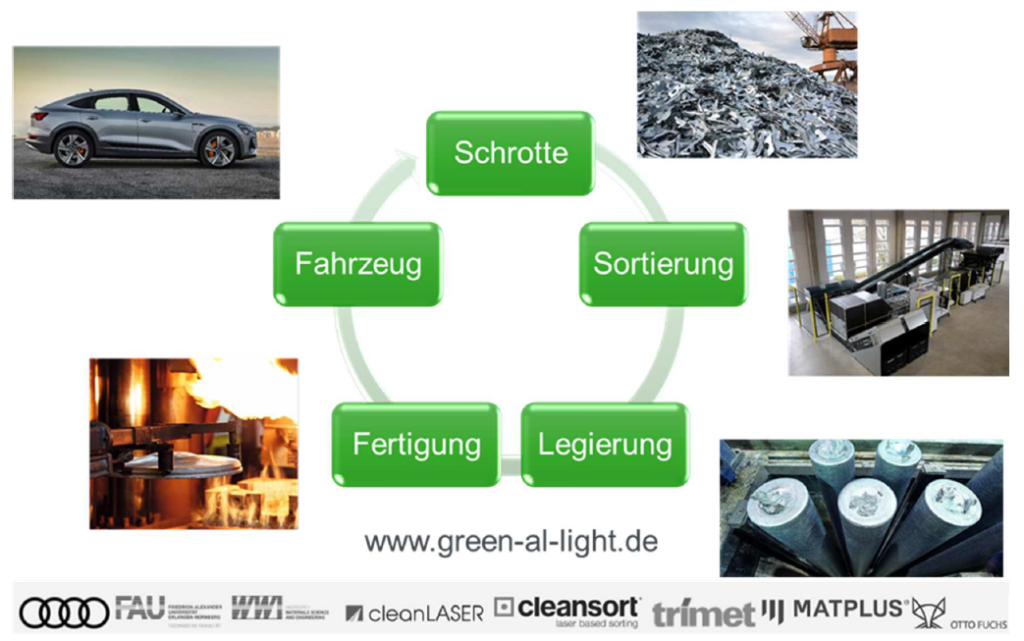Sustainable and cost-efficient lightweight aluminum construction for mobility applications (Green-Al-Light)
Subject area:
Light Metals & Mechanical Testing
Responsible Employees:
Prof. Dr.-Ing. Heinz Werner Höppel
Dominik Steinacker (M. Sc.)

The drive for reduced CO2 emissions is currently more pronounced than ever before, which is why the development of aluminum alloys, which are capable of increasing lightweight potential in automotive engineering, is a research priority. Since a large proportion of the accruing CO2 is attributable not to the operating time of the vehicles but to the extraction of raw materials for their production, a concept for the sustainable fabrication of structural components will be developed as part of the “Green-Al-Light” project. The basis of enhanced sustainability is the recycling of secondary aluminum from end-of-life scrap extracted from motor vehicles. In order to achieve this goal, comprehensive adaptation and digital networking of the entire process chain from material sorting to component processing are to be realized.
A crucial challenge for the success of the project is the optimization of the sorting process for the secondary material, which is based on the LIBS (Laser-Induced-Breakdown-Spectroscopy) process and designed for reliable sort and alloy specific separation of the scrap. Furthermore, research into the influence of inevitable increased proportions of alloying elements is a focus of the project, so that the property profile of the known primary alloys can also be achieved with the sustainable process route. These investigations are supported by various simulations and modeling, which are used, for example, to calculate feasible alloy compositions.
The Institute of General Materials Properties (WW1) is carrying out the joint project in cooperation with the partners Audi AG, Otto Fuchs KG, Trimet Aluminium SE, cleansort GmbH, Clean-Lasersysteme GmbH and Matplus GmbH. One of the central tasks of WW1 is to record the mechanical properties of secondary alloys under quasi-static and cyclic loading. In addition, scanning and transmission electron microscopy will be used to analyze the microstructure of the material as well as its damage mechanisms in order to link these with the findings from the mechanical test methods. In view of the intended use of the developed secondary alloy in mobility applications, the corrosion behavior will also be characterized.
The Green-Al-Light research project is funded by the Federal Ministry for Economic Affairs and Climate Action.